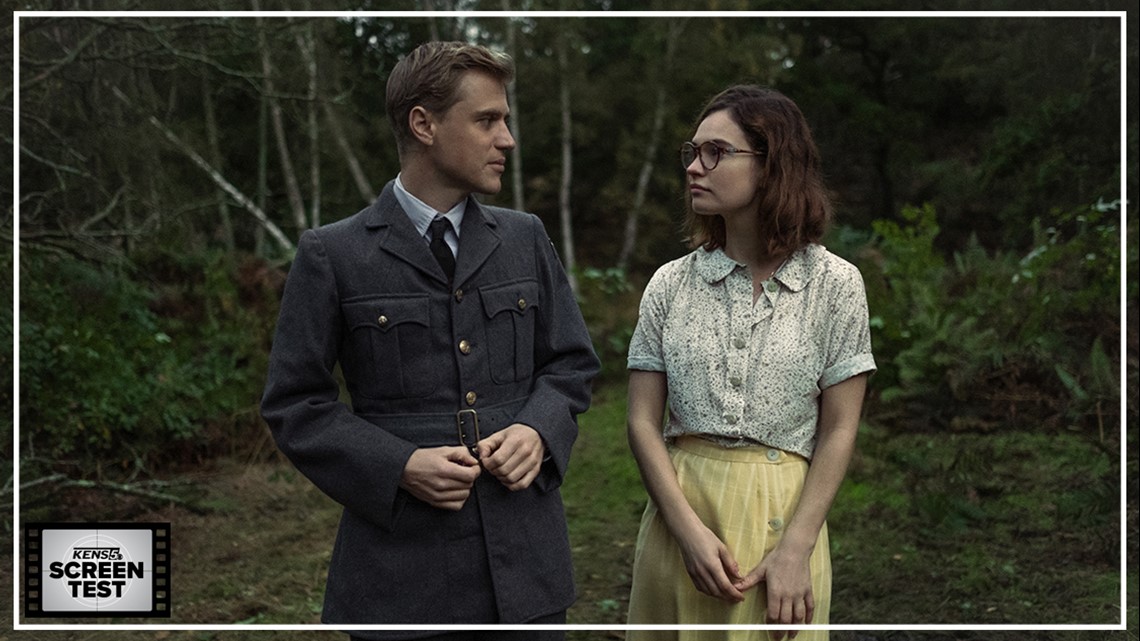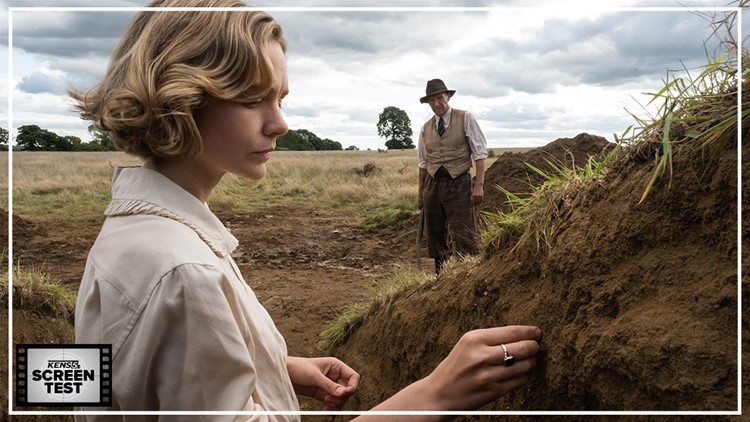“It speaks, doesn’t it—the past?”
So suggests Ralph Fiennes’s self-taught archaeologist Basil Brown in Netflix’s earnest but scattershot new period drama “The Dig,” and while it’s one of those parabolic lines of dialogue (courtesy of screenwriter Moira Buffini) delivered in such a way that you expect it to blow open massive new craters of ideas and meaning to be explored, “The Dig” struggles to intuit what exactly it is the history of this movie’s setting – place: a quiet, vast stretch of England land; time: the volatile weeks preceding World War II – would whisper.
It’s a result of this shortcoming that later on, despite the movie’s chummy ‘90s spirit and clear appreciation for laborious undertaking, a massively consequential discovery fails to rouse our emotions, the magnitude of what we’re seeing kept out of reach. This isn’t entirely surprising in the moment, because since the onset of the static archaeological expedition the movie unfolds around, we have observed RAF squadrons training overhead; a grieving widow laying flowers on a grave; a touch of terrible sickness; and a spark of chemistry that could become a flame. You don’t have to be the most keen-eyed viewer to suspect that the most potent drama of “The Dig” (adapted from John Preston’s novel of the same name) may just evolve beyond the mystery of what lies under the huge mounds of earth dotting the Suffolk estate of Sutton Hoo. That only partially turns out to be the case, and “The Dig” ends up being only partially confident in what it’s doing.
The aforementioned widow who owns the land is Carey Mulligan’s Edith Pretty. It’s her hiring of Basil – who prefers working outside a museum curator’s oversight – that first sets shovel to dirt...although he and his pseudo-employer are at odds over which mound is more likely to yield findings. Played by Fiennes with a dedicated warmth that envelops you into the pensive grace of his labor, Basil gently nudges away Edith’s instincts to follow his own. Where does that get him? Well, not quite to the potential that the eye-catching terrestrial acne of Edith’s backyard holds. He finds a lone, too-brittle artifact before briefly being buried alive—a literalization of being in over his head and also the immediate fallout of the inscrutable Edith attempting to excavate what’s keeping her buried in her own. Bigger discoveries await where she initially had “a feeling” they might reside and established archaeologists will soon arrive, some to cheerfully assist and others to lightly antagonize—muddying the narrative, introducing expendable new relationships and otherwise muting the double-character study that makes up the film’s first half in a half-hearted bid to scope out more cosmic revelations.
The events of “The Dig” are rooted in reality, and if nothing else director Simon Stone’s effort functions as retroactive tribute to Basil’s contributions in the 1939 discovery at Sutton Hoo—widely considered one of the most important in England’s history, and for which he was uncredited for until recently. Such an ironing-out of the facts pertaining to historic scientific achievement is quickly becoming a trendy subgenre; last year’s “Ammonite” and “Radioactive” were also keen on venting steam for how history will remember paleontologist Mary Anning and physicist Marie Curie, respectively.
“The Dig” strives to mold a similar legacy for Edith, who may not have picked up a pickaxe but who was essentially the titular undertaking’s benefactor, meaning she played an integral role in the excavation of a massive boat and the precious artifacts stored inside. Stone and Buffini’s initial characterization of Edith – she’s defined by little other than her grief and misfortune early on – foments some skepticism on our part, but the way she asserts final say over the fate of the contents discovered in the increasingly promising dig (to the dismay of Ken Stott’s bureaucratic scientist, filling the role of combative colleague) is a bright spot in the movie’s cluttered second half. One wonders if her frankness, delivered with characteristically cool intensity by Mulligan, isn’t spurred by the encroaching threat of disease. Whatever the case, it’s another wishy washy subplot in a movie that piles them on like wet kindling.
If Edith remains the truest protagonist of a movie eager to assist in the repositioning of women in scientific history, the inclusion of rookie archaeologist Peggy Piggott (Lily James) nearly sinks the endeavor. An underdog avatar, Peggy endures an awkward, terribly underdeveloped marriage with an intimacy-phobic partner and the realization that she was recruited only because her weight makes it unlikely that she’ll, well, break anything. Ironically, she ends up cracking the hull of the film’s sincerity when making a crucial find simply by being at the right place at the right time; it’s a feeble attempt by a screenplay that thinks it’s laid the foundations for a reckoning merely by putting her in a literal position to succeed. A budding romance with a fellow digger, meanwhile, does the bare minimum in imbuing Peggy with any sense of agency.


At the same time, the urgency of impending war is in the air. And though “The Dig” prefers to be a meditative film (represented most triumphantly by Mike Eley’s sumptuous cinematography) with nary a single bullet fired, Buffini attempts to weave this context into exploring such grandiose themes as time’s passing, mortality and legacy. As they start to contemplate what will become of their findings, we come to find both Basil and Edith have more at stake with the dig than we initially realized; Edith’s concerns about self-preservation in particular retain an emotional heft in a movie largely devoid of it (hat tip to Mulligan). But because the kaleidoscope nature of “The Dig” keeps her concerns from ever fully crystallizing, the execution is like watching Buffini attempt to excavate a buried ship with a garden trowel, the handle barely hanging on. In one scene, a sputtering RAF plane suddenly enters the background, descends and crashes on the other side of the tree line—an apt metaphor for how new portals of drama tend to randomly enter the picture and distract from what’s already been established before enduring a rough finale.
I can appreciate when a filmmaker adds several shades to their story to try and make the experience more vivid. But “The Dig” remains a dry affair, a movie in which convention belies a lack of intention, where a myriad of individual details distract from the bigger picture. Which is a shame, because the last 15 or so minutes are when that bigger picture is finally pulled into focus, and we spot an intriguing vision. But despite the craft that imbues the film with a sweeping aesthetic grandeur and a stately ensemble of talented actors, it’s so stuffed with tangents that the whole endeavor threatens to collapse in on itself, rendering its most enticing artifacts lost.
"The Dig" is rated PG-13 for brief sensuality and partial nudity. It's available to stream via Netflix on Jan. 29.
Starring: Carey Mulligan, Ralph Fiennes, Lily James, Johnny Flynn
Directed by Simon Stone
2021
MORE SCREEN TEST REVIEWS:
- ‘I Blame Society’ Review: Cheeky movie-within-a-movie experiment will keep you on your toes
- ‘The Reason I Jump’ Review: The experiences of a person with autism are explored in colorful, spirited, lightly profound new doc
- ‘News of the World’ Review: Tom Hanks travels across post-Civil War Texas in airy, occasionally intelligent Western
- ‘Soul’ Review: Pixar prioritizes concept over character in its most literal meaning-of-life tale yet
- ‘Another Round’ Review: Mads Mikkelsen experiments with endless drinking in bittersweet Danish drama
- The best movies of 2020



